SORL1
-
Official Full Name
sortilin-related receptor, L(DLR class) A repeats containing -
Overview
This gene encodes a mosaic protein that belongs to at least two families: the vacuolar protein sorting 10 (VPS10);domain-containing receptor family, and the low density lipoprotein receptor (LDLR) family. The encoded protein also;contains fibronectin type III repeats and an epidermal growth factor repeat. The encoded protein is translated as a;preproprotein and likely plays roles in endocytosis and sorting. There may be an association between expression of;this locus and Alzheimers Disease. -
Synonyms
SORL1;sortilin-related receptor, L(DLR class) A repeats containing;C11orf32, chromosome 11 open reading frame 32 , sortilin related receptor, L(DLR class) A repeats containing;sortilin-related receptor;gp250;LR11;LRP9;SorLA;SorLA 1;C11orf32;FLJ21930;FLJ39258;LDLR relative with 11 ligand binding repeats;LDLR relative with 11 ligand-binding repeats;Low density lipoprotein receptor relative with 11 ligand binding repeats;Low-density lipoprotein receptor relative with 11 ligand-binding repeats;LR 11;LRP 9;Mosaic protein LR11;SORL 1;SORL_HUMAN;SorLA-1;Sortilin related receptor;Sortilin related receptor L(DLR class) A repeats containing;Sorting protein related receptor containing LDLR class A repeats;Sorting protein-related receptor containing LDLR class A repeats;OTTHUMP00000231797;sortilin-related receptor, L(DLR class) A repeats-containing;low-density lipopro
Recombinant Proteins
- Mouse
- Human
- Mammalian Cells
- Wheat Germ
- HEK293
- E.coli
- His
- Non
- Avi
- Fc
| Cat.# | Product name | Source (Host) | Species | Tag | Protein Length | Price |
|---|---|---|---|---|---|---|
| SORL1-15763M | Recombinant Mouse SORL1 Protein | Mammalian Cells | Mouse | His |
|
|
| SORL1-29617TH | Recombinant Human SORL1 | Wheat Germ | Human | Non | 100 amino acids |
|
| SORL1-01H | Active Recombinant Human SORL1 Protein, His-tagged | HEK293 | Human | His | 82-753 |
|
| SORL1-801H | Recombinant Human SORL1 protein, His-tagged | E.coli | Human | His | 1865-2214 aa |
|
| SORL1-802H | Recombinant Human SORL1 protein, GST-tagged | E.coli | Human | His | 377-604 aa |
|
| SORL1-8576M | Recombinant Mouse SORL1 Protein, His (Fc)-Avi-tagged | HEK293 | Mouse | Avi&Fc&His |
|
|
| SORL1-8576M-B | Recombinant Mouse SORL1 Protein Pre-coupled Magnetic Beads | HEK293 | Mouse |
|
Background
What is SORL1 protein?
SORL1 (sortilin related receptor 1) gene is a protein coding gene which situated on the long arm of chromosome 11 at locus 11q24. It is a large, multi-domain containing, membrane-bound receptor that plays a significant role in endosomal sorting of proteins between the trans-Golgi network, endosomes, and the plasma membrane. SORL1 is composed of several distinct domains and belongs to both the low-density lipoprotein receptor (LDLR) family and the vacuolar protein sorting 10 (VPS10) domain receptor family. The level of SORL1 was found to be decreased in the AD brain, which positively correlated with β-amyloid (Aβ) accumulation. SORL1 protein is consisted of 2214 amino acids and its molecular mass is approximately 248.4 kDa.
What is the function of SORL1 protein?
SORL1 is involved in the sorting of proteins within the endosomal system, helping to direct proteins to either the lysosomal degradation pathway or back to the cell surface. SORL1 plays a crucial role in the trafficking and processing of APP. It helps to regulate the transport of APP away from the endosome, thereby influencing the production of amyloid-beta (Aβ) peptides, which are implicated in Alzheimer's disease. SORL1 works together with the retromer trafficking complex to regulate the recycling of APP out of the endosome, contributing to endosomal swelling and APP misprocessing when SORL1 function is compromised. SORL1's expression can significantly impact the neuronal recycling pathway, with loss of SORL1 causing endosomal traffic jams and enlargement of early and recycling endosomes.
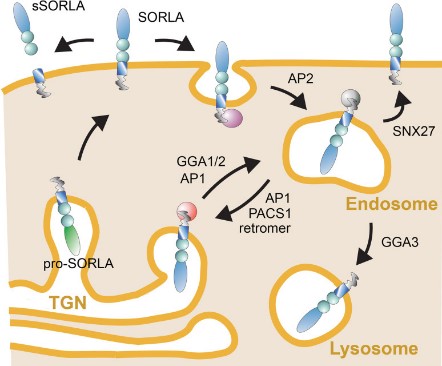
Fig1. Intracellular trafficking path for SORLA. (Vanessa Schmidt, 2017)
SORL1 Related Signaling Pathway
SORL1 is involved in the occurrence and development of late-onset Alzheimer's disease by interacting with different cytoplasmic adapters to affect the transport and metabolism of β-amyloid precursor proteins in cells. The interaction between SORL1 and brain-derived neurotrophic factor may affect the survival and function of neurons, and thus the progression of AD. SORL1 may be involved in regulating the expression and function of receptors on the cell surface, affecting the signaling of neurotransmitters. SORL1 may affect APP processing and Aβ production through Rho kinase signaling pathway. SORL1's interaction with GGA protein may affect its transport and recycling in the cellular endosome.
SORL1 Related Diseases
SORL1 gene is closely related to the pathogenesis of late-onset Alzheimer's disease (AD) and is a high-risk susceptibility gene whose expression is significantly reduced in AD patients. Studies have shown that SORL1 mainly plays a role in the early endosome and trans-Golgi, and affects the transport and metabolism of β-amyloid precursor protein by interacting with different cytoplasmic adapters, and then participates in the occurrence and development of AD. In addition, SORL1 gene knockout resulted in learning and memory impairment, abnormal distribution of n-methyl-D-aspartate receptor expression, and decreased expression of brain-derived neurotrophic factor and synaptic related proteins. It is suggested that SORL1 is involved in the pathogenesis of AD by regulating the signal axis of N-methyl-D-aspartate receptor-adenosine cyclophosphate-effecting-element binding protein (CREB) -brain-derived neurotrophic factor.
Bioapplications of SORL1
Recombinant SORL1 protein can be used to study its functions in intracellular material transport, immune response, cell adhesion and cell migration, especially in the study of Alzheimer's disease (AD), to explore how SORL1 affects the transport and metabolism of β-amyloid precursor protein (APP) and its role in the development of the disease. The development of drugs or antibodies that target SORL1 may provide new strategies for the treatment of certain diseases, especially in the field of AD therapy.
Case Study
Case Study 1: Bao-Yu Li, 2019
SORL1, the gene encoding the large multidomain SORLA protein, has emerged as only the fourth gene that when mutated can by itself cause Alzheimer's disease (AD), and as a gene reliably linked to both the early- and late-onset forms of the disease. SORLA is known to interact with the endosomal trafficking regulatory complex called retromer in regulating the recycling of endosomal cargo, including the amyloid precursor protein (APP) and the glutamate receptor GluA1. Nevertheless, SORLA's precise structural-functional relationship in endosomal recycling tubules remains unknown. Here, the researchers address these outstanding questions by relying on crystallographic and artificial-intelligence evidence to generate a structural model for how SORLA folds and fits into retromer-positive endosomal tubules, where it is found to dimerize via both SORLA's fibronectin-type-III (3Fn)- and VPS10p-domains. Moreover, they identify a SORLA fragment comprising the 3Fn-, transmembrane, and cytoplasmic domains that has the capacity to form a dimer, and to enhance retromer-dependent recycling of APP by decreasing its amyloidogenic processing.
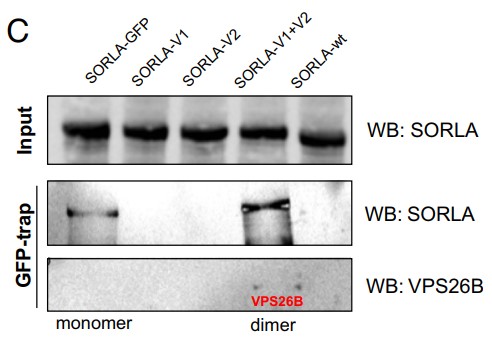
Fig1. GFP-trap immunoprecipitation analysis of lysates from HEK293 cells.
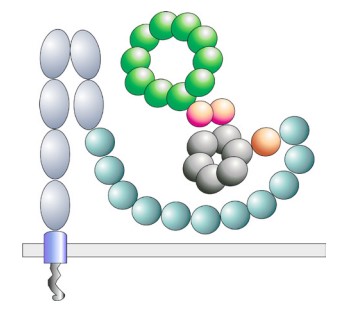
Fig2. Schematics representing domain architectures and predicted folding of the full SORLA luminal domain.
Case Study 2: Christy Hung, 2021
Dysfunction of the endolysosomal-autophagy network is emerging as an important pathogenic process in Alzheimer's disease. Mutations in the sorting receptor-encoding gene SORL1 cause autosomal-dominant Alzheimer's disease, and SORL1 variants increase risk for late-onset AD. To understand the contribution of SORL1 mutations to AD pathogenesis, the researchers analyze the effects of a SORL1 truncating mutation on SORL1 protein levels and endolysosome function in human neurons. They find that truncating mutation results in SORL1 haploinsufficiency and enlarged endosomes in human neurons. Analysis of isogenic SORL1 wild-type, heterozygous, and homozygous null neurons demonstrates that, whereas SORL1 haploinsufficiency results in endosome dysfunction, complete loss of SORL1 leads to additional defects in lysosome function and autophagy. Neuronal endolysosomal dysfunction caused by loss of SORL1 is relieved by extracellular antisense oligonucleotide-mediated reduction of APP protein, demonstrating that PSEN1, APP, and SORL1 act in a common pathway regulating the endolysosome system, which becomes dysfunctional in AD.
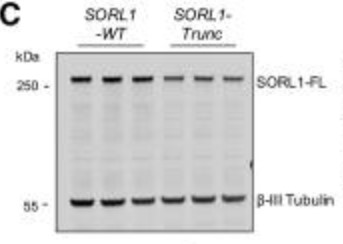
Fig3. Total full-length SORL1 levels are reduced by approximately 50% in SORL1 mutant neurons.
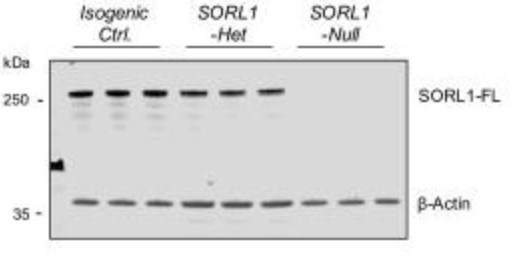
Fig4. Representative western blots of SORL1 and neuron-specific β3-tubulin are shown.
Quality Guarantee
High Purity
.jpg)
Fig1. SDS-PAGE (SORL1-01H)
.
.jpg)
Fig2. SDS-PAGE (SORL1-801H)
Involved Pathway
SORL1 involved in several pathways and played different roles in them. We selected most pathways SORL1 participated on our site, such as , which may be useful for your reference. Also, other proteins which involved in the same pathway with SORL1 were listed below. Creative BioMart supplied nearly all the proteins listed, you can search them on our site.
| Pathway Name | Pathway Related Protein |
|---|
Protein Function
SORL1 has several biochemical functions, for example, ADP-ribosylation factor binding,beta-amyloid binding,low-density lipoprotein particle binding. Some of the functions are cooperated with other proteins, some of the functions could acted by SORL1 itself. We selected most functions SORL1 had, and list some proteins which have the same functions with SORL1. You can find most of the proteins on our site.
| Function | Related Protein |
|---|---|
| low-density lipoprotein particle binding | PCSK9,CRP,SCARB1,CDH13,LIPC,MSR1,SCARF1,COLEC12,THBS1,ANKRA2 |
| beta-amyloid binding | ARMCX5-GPRASP2,ITM2C,Apba1,OLFM1,MAPK8IP2,APOA1,APBB1,TGFB2,COL25A1,BACE2 |
| transmembrane signaling receptor activity | TLR5,CD3D,TNFRSF10C,TLR7,TLR9,PTH1RA,KLRC2,THBD,IGSF6,NRXN2 |
| protein binding | COBL,PMP2,RWDD2B,PFN1,F3,NXT2,CTLA4,SULT2B1,UBE2M,TET2 |
| ADP-ribosylation factor binding | ADCYAP1R1,RAB11FIP4,ZFP652,GRASP,RAB11FIP4A,GGA2,RAB11FIP4B,GGA3,RAB11FIP3 |
Interacting Protein
SORL1 has direct interactions with proteins and molecules. Those interactions were detected by several methods such as yeast two hybrid, co-IP, pull-down and so on. We selected proteins and molecules interacted with SORL1 here. Most of them are supplied by our site. Hope this information will be useful for your research of SORL1.
GGA2;GGA1;dimyristoylphosphatidyl choline;heparin;calcium(2+);DYRK3;APOE;LRPAP1;APOA5
Resources
Related Services
Related Products
References



